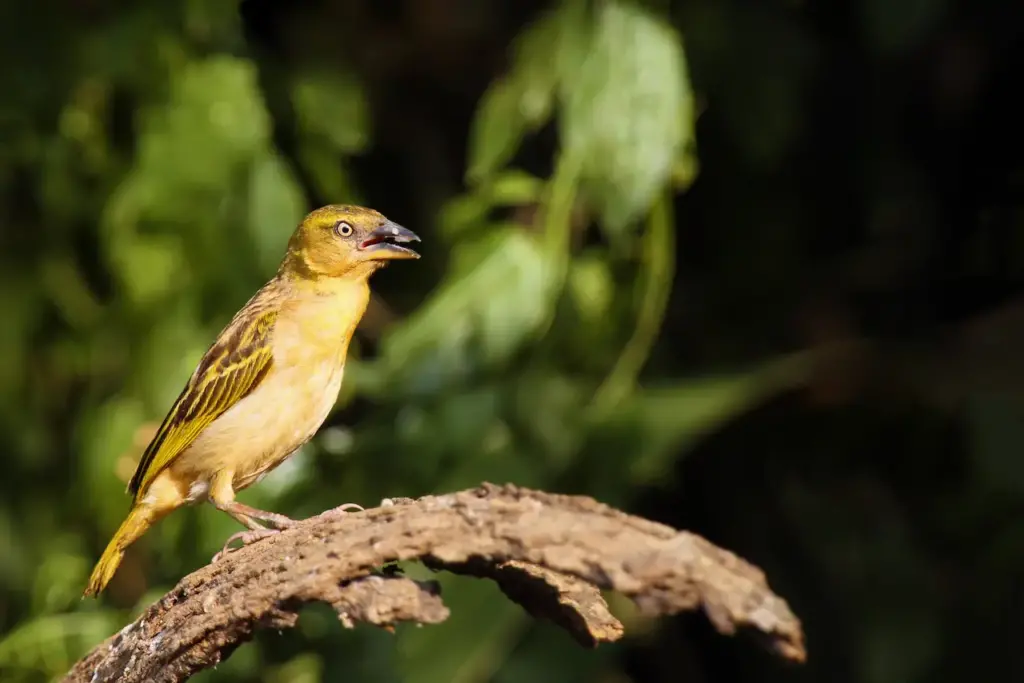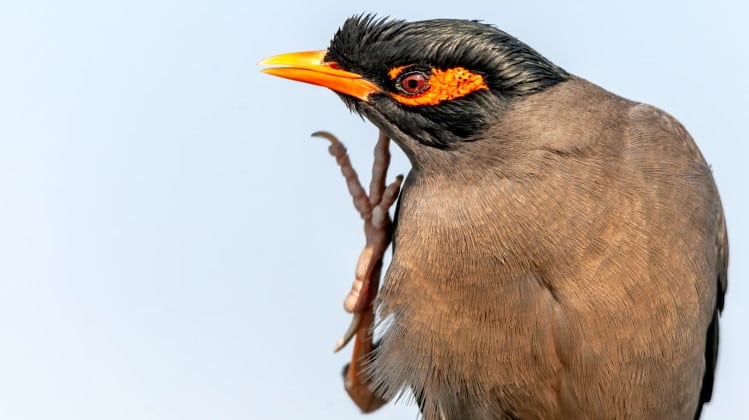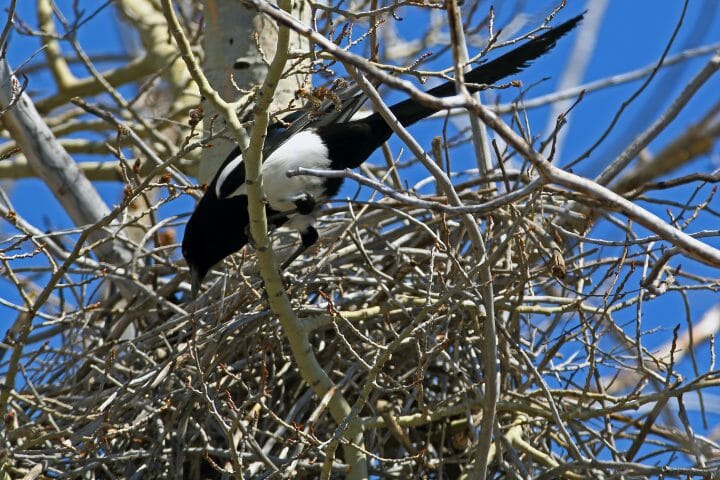The Holub’s Golden Weavers (Ploceus xanthops) are known by a wide range of names, including African Golden Weavers, Camburn’s Golden Weavers, Jameson’s Golden Weavers, Large Golden Weavers, Large Golden-Weavers, Larger Golden Weavers, Larger Golden-Weavers and Monteiro’s Golden-Weavers
These weavers are found in the following African countries: Angola, Botswana (northern parts), Burundi, Republic of the Congo, Democratic Republic of the Congo, Gabon, Kenya, Malawi, Mozambique, Namibia, Rwanda, South Africa (eastern parts), Swaziland, Tanzania, Uganda, Zambia and Zimbabwe. They occur naturally in savannas, woodland areas, scrublands, and cultivations.

Description
The Holub’s Golden Weavers are larger than other Golden Weavers measuring 17 – 18 cm in length (including tail). Males typically weigh between 40-50 grams and females 35-40 grams. Both have pale eyes and heavy blackish bills.
Juveniles have a mostly dull olive-green plumage. The tail has yellowish margins; the wings are dark brown with greenish-buff edgings. Their eyes are brown.
Similar Species: They look similar to other golden weavers but are larger and other Golden Weavers have darker eyes.
Breeding / Nesting
Most breeding occurs from August to April; the peak season being from October to February. The Holub’s Golden Weavers usually nest near water. The average clutch consists of 1 to 3 eggs, which are incubated by the female for 14 to 15 days. The mother raises the chicks with the assistance of the male. The young leave the nest when they are about 19 to 21 days old.
Vocalizations / Calls
Their vocalizations are described as “check” notes as well as a sizzling “radio static” song.

Global Names:
- Catalan: teixidor citrí
- Chinese: 大金织雀 / 大金織布鳥
- Croatian: zlatno-zelena pletilja
- Czech: snovač Holubův
- Danish: Safrangul Væver
- Dutch: Saffraanwever
- Finnish: isokultakutoja
- French: Tisserin safran
- German: Safranweber
- Hungarian: Holub-szövőmadár
- Italian: Tessitore dorato di Holub
- Japanese: ookoganehataori / オオコガネハタオリ
- Lithuanian: Krokinis audėjas
- Norwegian: Solvevar / Solvever
- Polish: wikłacz złotawy
- Portuguese: tecelão-dourado-de-dorso-verde
- Russian: Шафрановый ткач
- Serbian: Velika zlatna tekstor tkalja
- Slovak: pletiarka šafranová
- Spanish: Tejedor Azafranado
- Swedish: saffransvävare
- Ukrainian: Ткачик шафрановий





